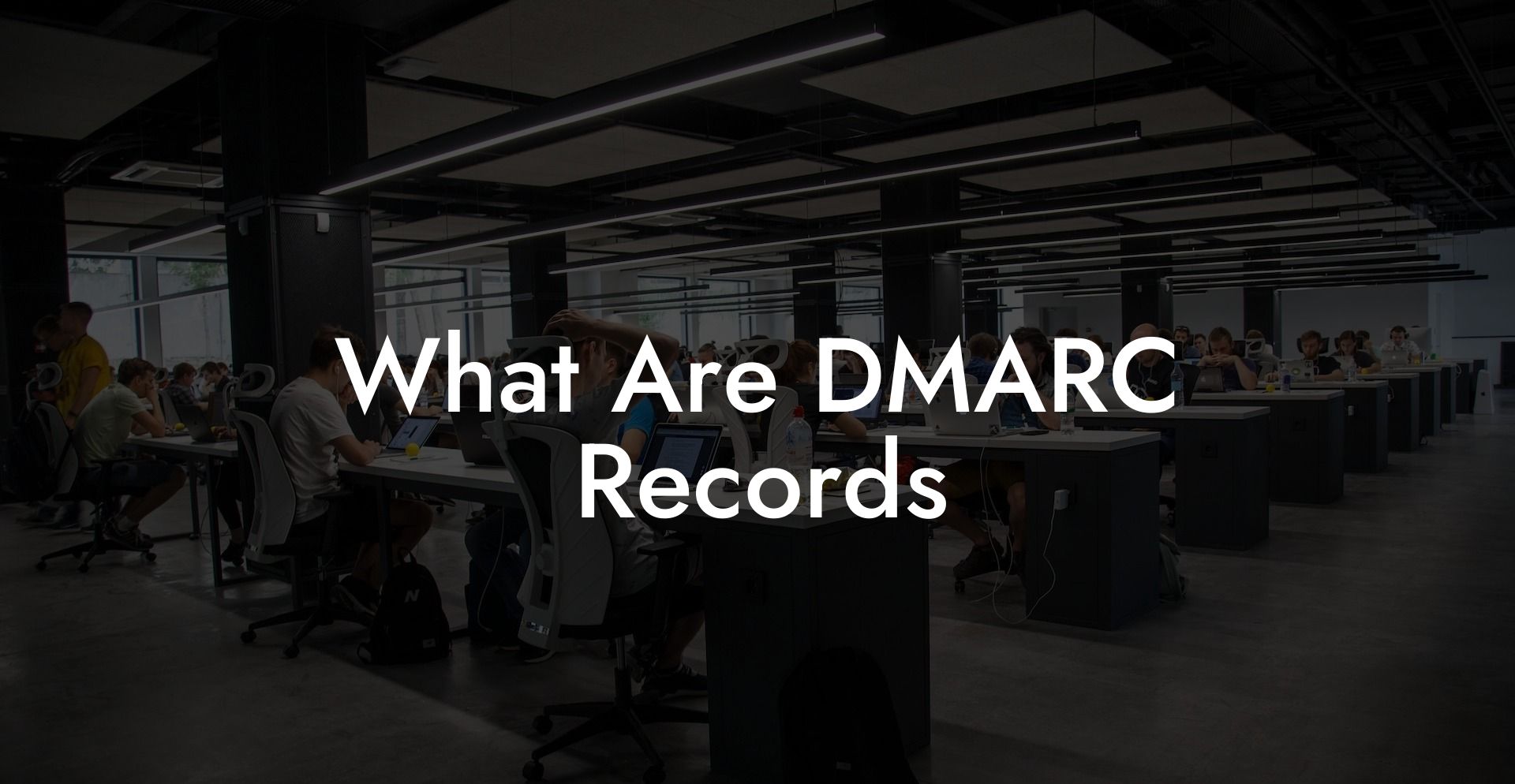In today's digital world, rogue actors continue to exploit vulnerabilities in email security, leading to increased cases of email fraud and phishing. Organizations must ensure their email security measures are up-to-date and exemplary. In this light, DMARC (Domain-based Message Authentication, Reporting & Conformance) records have gained prominence as a crucial layer in the fight against email phishing and spoofing. In this comprehensive guide, we delve into the world of DMARC records and how their implementation can protect your organization from email-based threats.
What Are DMARC Records Table of Contents
Understanding DMARC Records
DMARC is an email authentication protocol that leverages two other well-established standards - SPF (Sender Policy Framework) and DKIM (DomainKeys Identified Mail) - to determine the legitimacy of incoming email messages. By implementing DMARC, a domain owner can clearly specify how email receivers should handle emails that fail authentication checks.
How DMARC Works
Protect Your Data Today With a Secure Password Manager. Our Top Password Managers:
DMARC operates based on a set of rules called DMARC policies. These policies tell the email receiver how to handle emails from a specific domain that do not pass SPF or DKIM validation. DMARC acts like a security guard for your email, ensuring only legitimate messages reach their intended recipients.
Benefits of Using DMARC Records
- Improved email security by verifying the authenticity of incoming messages
- Reduced risk of email phishing and spoofing
- Greater visibility into the email sending practices of your organization
- Enhanced sender reputation and better email deliverability
- Increased trust and confidence in the email ecosystem
Implementing DMARC Records
Setting up DMARC involves publishing a DMARC record in your domain's DNS (Domain Name System). The record, in the form of a TXT record, contains the DMARC policy specifying handling instructions for emails failing SPF and DKIM validation.
Components of a DMARC Record
A typical DMARC record consists of the following components:
- v: DMARC version, should be set to "DMARC1"
- p: Policy for handling email messages failing DMARC check, options include "none", "quarantine", and "reject"
- rua: Reporting URI for sending aggregate reports, specified in the format "mailto:email_address"
- ruf: Reporting URI for sending forensic (individual) reports
- adkim: Alignment mode for DKIM, set to "r" for relaxed or "s" for strict
- aspf: Alignment mode for SPF, set to "r" for relaxed or "s" for strict
- pct: Percentage of emails to apply the policy to, ranging from 0 to 100%
Monitoring and Analyzing DMARC Reports
DMARC provides valuable insight into your domain's email traffic through aggregate and forensic reports. These reports help detect unauthorized email activity and improve your organization's email security posture.
Aggregate Reports
Aggregate reports are XML files containing details on all email activity (both legitimate and fraudulent) related to your domain. These reports allow you to monitor authentication status and identify potential issues with your email policy settings.
Forensic Reports
Forensic reports provide individualized information on each email incident. They may include email headers, authentication details, and other diagnostic data to assist domain owners in identifying issues and remedying potential vulnerabilities.
What Are DMARC Records Example:
Consider a fictional organization, "example.com." To add a DMARC record, the domain owner publishes the following TXT record in their DNS:
_dmarc.example.com. IN TXT "v=DMARC1; p=reject; rua=mailto:dmarc-reports@example.com"
This record indicates that email receivers should reject any emails from "example.com" that fail the DMARC checks. It also specifies that aggregate reports should be sent to the email address "dmarc-reports@example.com."
In conclusion, implementing DMARC records is a vital step to bolster email security and protect your organization against phishing attacks and email spoofing. As email remains a primary mode of communication, it is crucial to remain proactive and vigilant in defending against threats. We encourage you to explore other guides on Voice Phishing and share this post with your peers to help create a safer and more secure email ecosystem.
Protect Your Data Today With a Secure Password Manager. Our Top Password Managers:















